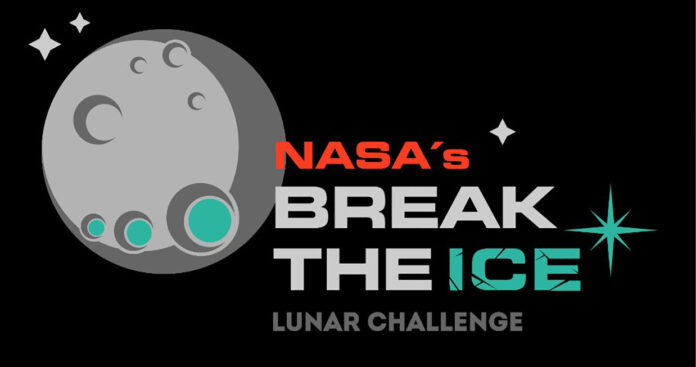HUNTSVILLE — NASA launched the second phase of its Break the Ice Lunar Challenge to advance technology that is – quite literally – groundbreaking.
The challenge invites the public to design a system for excavating and delivering sustainable lunar resources, most specifically, water.
Phase 2 of the challenge contains three levels lasting 23 months and offering a total prize purse of $3 million. Registration for the phase 2 competition closes Sept. 30.
Using the moon’s resources to support surface operations while decreasing supply needs from Earth has been high on NASA’s list of innovation priorities. These priorities include converting lunar ice into rocket fuel, drinkable water, and other vital resources.
Phase 1 of the Break the Ice Lunar Challenge launched in 2020. It sought to incentivize innovative approaches for excavating icy moon dirt and delivering the resources in extreme lunar environmental conditions.
Phase 2 addresses NASA technology gaps related to harvesting and moving large quantities of resources on the moon.
Robotic systems for excavation will need to withstand the harsh environments inside permanently shadowed regions at the lunar South Pole. It is the targeted landing site for crewed Artemis missions where ice has been observed.
The challenge includes excavating large quantities of icy moon dirt called regolith. It should also deliver large quantities of resources; hardware and equipment that is lightweight and energy efficient, reliable and durable.
“As NASA works to extend human exploration of the solar system, our first stop is a sustained presence on the moon,” said Jim Reuter, associate administrator for NASA’s Space Technology Mission Directorate at NASA headquarters in Washington. “New technologies and systems like these are essential for us to set a new paradigm for exploration.”
In Phase 2, teams will be asked to design, build, and test energy efficient, icy regolith excavation and transportation system prototypes.
In Phase 2 competition level one, teams will develop detailed engineering designs and long-duration demonstration test plans for their prototype systems. U.S. teams that meet submission requirements for Phase 2 competition level one will be awarded an equal share of the $500,000 prize purse. All teams that meet the submission requirements for Phase 2 competition level one will advance to Phase 2 competition level two.
In Phase 2 competition level two, teams will build terrestrial analog full-scale prototypes and conduct durability demonstrations. The top-scoring U.S. team will receive $300,000; the second-highest scoring U.S. team will receive $200,000; the third-highest scoring U.S. team will receive $125,000; and up to five U.S. runners-up will receive $75,000 each. Up to 15 teams – including winners and runners-up – that exceed the minimum score will advance to Phase 2 competition level three.
In Phase 2 competition level three, teams will test the prototype systems built in Phase 2 competition level two. The top-scoring U.S. team will receive $1 million, and the second-highest scoring U.S. team will receive $500,000. In addition to cash prizes, NASA will also award opportunities to test concepts in a thermal vacuum that will simulate the temperature and atmospheric pressure conditions at the dusty lunar south pole.
Up to three top-scoring international teams will be recognized in competition level two and competition level three. International teams are not eligible to be awarded prize money or thermal vacuum testing opportunities.
In 2021, NASA awarded 13 teams a share of a $500,000 prize purse for their Phase 1 designs of system architecture for collecting and moving large amounts of icy regolith and water from a permanently shadowed region near the Moon’s South Pole.
Teams had seven months to register and submit a detailed system architecture, an excavation plan, and an animation of the system in operation. Thirty-one teams – including academia, industry, and independent inventors from 17 U.S. states, Canada, Australia, and Sri Lanka – submitted eligible proposals.
The Break the Ice Lunar Challenge is a NASA Centennial Challenge, managed by the Marshall Space Flight Center in Huntsville, and the Kennedy Space Center in Florida.
Don’t miss out! Subscribe to our email newsletter to have all our smart stories delivered to your inbox.



